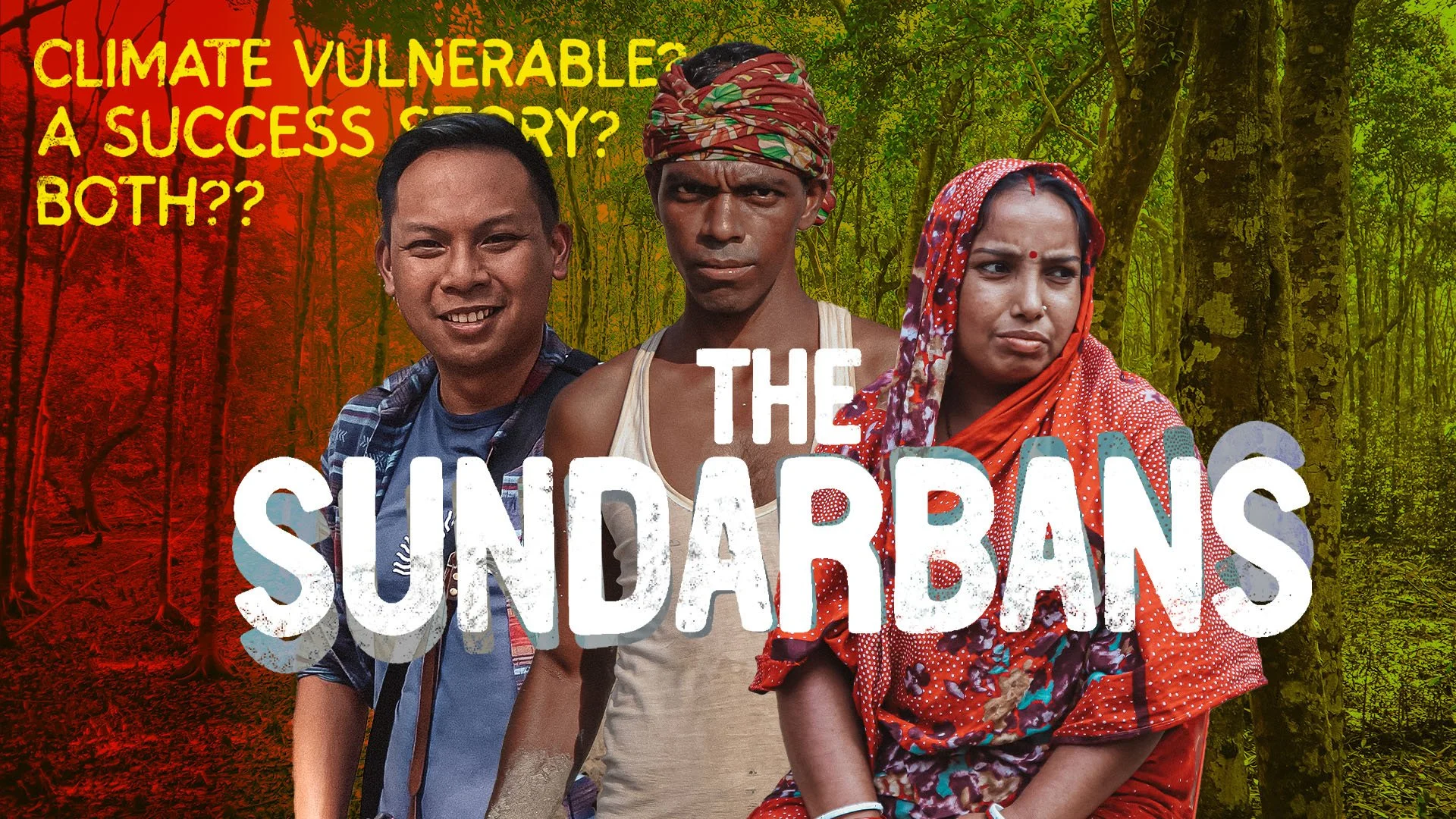Climate Vulnerability AND Success?
“We feel like birds in a cage now. When we finally get to see the faces of our wives and our children, we will finally be flying free.”
I could not believe the vulnerability, warmth, and openness of the brick layers in Dhaka as they shared with me their struggles working one of the most difficult jobs on earth. Working with the heavy machinery and toxic emissions of a brick kiln put these guys in harm’s way on a daily basis.
“I was injured just a few days ago,” one kind bricklayer told me with an incongruent smile on his face. “But I am still working. We are like robots.”
My problem-solution approach to storytelling immediately sent me on the hunt. The problem in this scenario was so obvious I was inhaling it. The pollution around Dhaka plus the working conditions around these brickyards. The solution? It seemed completely obscured. People had to take these jobs because they had no other means of working. Is there a way to at least minimize the hazards and toxicity of the brickmaking process? I’m sure there is, but nothing seems remotely close to implementation. Definitely not at the scale that would take care of the pollution of a whole thousand of these kilns.
A few days later I left for the Sundarbans. I learned that this was a large mangrove forest area in the south of Bangladesh. Many of the villages there were becoming flooded during cyclones. The farms were no longer producing and many homes were collapsing into the sea.
As that side-quest started taking shape, I started to feel like I was only getting a sense of the climate related problems of Bangladesh. Where were the solutions?
There was a connecting thread. The Sundarbans were the place where many of the bricklayers had migrated from. I’m thankful I’ve had the chance to dive deeper there.
We visited the community of Banojibi, an eco-village on the edge of the national forest. Banojibi was a project of the organization BEDS. BEDS not only confronted environmental challenges, but it did so through the lens of how to do so in a way that makes a positive impact on people’s lives and livelihoods. A dream outcome is one where people no longer need to leave the Sundarbans, but can instead find abundant and sustainable ways of living while also keeping their neighbors safe from threats like climate change.
It boasted guest houses for tourists, plenty of solar power, and acres of farmland and fish ponds. It was also a training ground where people could hone their sustainable skills and share them with the surrounding communities.
One of the most effective methods of building climate resilience is planting trees. Mangrove forests are especially valuable in buffering storms. When a cyclone strikes the coast, mangroves can be a great line of defense, absorbing much of the direct winds from a cyclone, and insulating the villages inland.
I was perhaps most impressed by the weather clubs. The women of Banojibi formed networks where they could use cell phones to relay weather information, evacuation alerts, and tips on how to stay safe. “When we hear about natural disaster 2-3 days in advance),we go to door to door for making awareness. We request people to bring the elderly, children and pregnant women to the cyclone shelters. We continue doing until the last moment,” one of them told me.
Banojibi was just one of many examples of how the Sundarbans were a site of climate resilience. Is it possible to be perhaps the most climate vulnerable country on earth and to also be a success story? Yes. After everything I saw, I can’t answer otherwise.
We need to go beyond the surface level descriptions of Bangladesh as a crowded and polluted place and to instead ask the ever important question. Why?
Climate of course plays a massive role in this story. The climate vulnerability of Bangladesh can’t be overlooked.
At the same time, though, Bangladesh features many powerful examples of climate resilience. Of ordinary people applying creativity, problem solving, and a care for each other that helps them weather the storm.
I got to visit the brick kilns of Dhaka. These sites that are the primary source of the city’s notorious pollution. I came with the question- could anything be done about it?
I didn’t find my answer until I visited the home communities of its hard working bricklayers… the Sundarbans, a gorgeous habitat for the threatened Bengal tiger, but also a severely threatened area, constantly battered by cyclones and losing land to the sea.
It was there that I found something remarkable. An eco-village, demonstrating success stories in the heart of one of the most climate vulnerable places on earth.
I am blown away by the depth of interviews I was able to get for this video and extremely grateful to the hard working men and women for their vulnerability in sharing their experiences with me.






